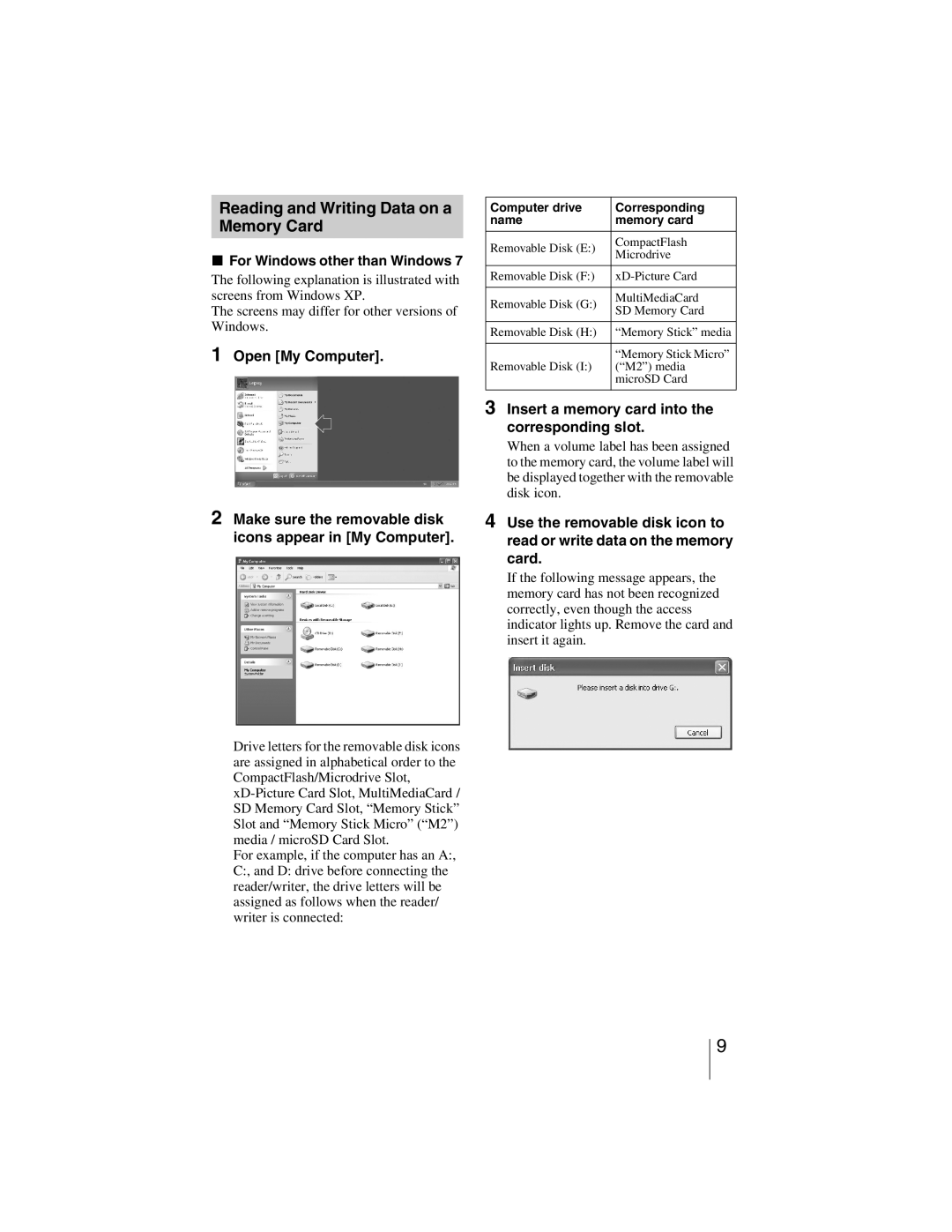
Reading and Writing Data on a Memory Card
xFor Windows other than Windows 7
The following explanation is illustrated with screens from Windows XP.
The screens may differ for other versions of Windows.
1Open [My Computer].
2Make sure the removable disk icons appear in [My Computer].
Drive letters for the removable disk icons are assigned in alphabetical order to the CompactFlash/Microdrive Slot,
For example, if the computer has an A:, C:, and D: drive before connecting the reader/writer, the drive letters will be assigned as follows when the reader/ writer is connected:
Computer drive | Corresponding | |
name | memory card | |
|
| |
Removable Disk (E:) | CompactFlash | |
Microdrive | ||
| ||
|
| |
Removable Disk (F:) | ||
|
| |
Removable Disk (G:) | MultiMediaCard | |
SD Memory Card | ||
| ||
|
| |
Removable Disk (H:) | “Memory Stick” media | |
|
| |
| “Memory Stick Micro” | |
Removable Disk (I:) | (“M2”) media | |
| microSD Card | |
|
|
3Insert a memory card into the corresponding slot.
When a volume label has been assigned to the memory card, the volume label will be displayed together with the removable disk icon.
4Use the removable disk icon to read or write data on the memory card.
If the following message appears, the memory card has not been recognized correctly, even though the access indicator lights up. Remove the card and insert it again.
9
